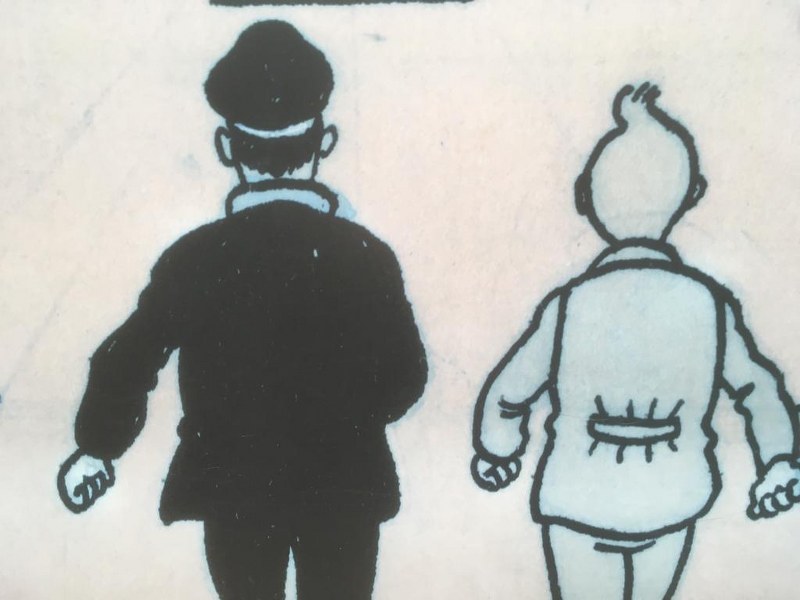Ninty-four years have passed ever since Hergé gifted to the world his iconic cartoon character Tintin who along with his dog Snowy took his fans to exciting adventures all over the world.
On January 10, 1929, Belgian cartoonist Hergé, whose real name was Georges Remi, had published the first book in “The Adventures of Tintin” comic series, which soon became an evergreen classic, winning hearts of readers across the globe for ages.
Since his inception in the early 20th century, Tintin has remained a popular literary figure with statues and commemorative murals of the character seen throughout Belgium.
In addition to the original comic series, Tintin has appeared in numerous plays, radio shows, television shows, and feature films, including the 2011 film The Adventures of Tintin, directed by Steven Spielberg.
For generations, growing up as a kid to stepping into adolescence, there was a constant companionship of Tintin, the realistic yet courageous young Belgian reporter created by Herge.
In Brussel’s The Belgian Comic Strip Center, as you step inside, a giant replica of a red and white moon rocket greets you. You know immediately that you have entered the world of Tintin and other comic characters. Life-size models of other famous comic series greet you as well besides a bust statue of Tintin and a photograph of his creator, Herge in one corner of the stairways.

As per TinTin.com, Herge had once said “Tintin is me. My eyes, my feelings, my lungs, my guts!”
“I believe I am the only person able to animate him, the only person able to give him a soul,” he had said.
What made Tintin so significant is also hidden in his appearance.
“His distinguishing feature is of course his little quiff! In the beginning, there was no such distinguishing feature. Most notably the first strips (the first 8 pages) show Tintin with smooth and combed hair,” read the official website dedicated to the cartoon character.
The famous hairstyle only appears when Tintin jumps into a car and races away. The sudden acceleration gives Tintin the distinctive quiff with which he is synonymous. The little tuft of hair will remain, and never droops, the website said.

Apart from Tintin, his family of unique characters included his rough-haired dog Snowy, Captain Haddock and Thomson and Thompson.
Interestingly, by 2007, a century after Hergé’s birth in 1907, Tintin had been published in more than 70 languages with sales of more than 200 million copies.
The entire cartoon series is composed of 24 albums.
The debut story was named Tintin in the Land of the Soviets.
It was published in the children’s weekly Le Petit Vingtième.
In the story, the young reporter travelled to Soviet Russia, exposing nefarious dealings by the Bolsheviks.
In the later stories, Tintin was seen travelling to various nations like Belgian Congo, China, the United States, the high seas, and even the Moon.

When Hergé died in 1983, the 24th album in the Tintin series had been only roughly sketched. The unfinished volume was published posthumously, reads Encyclopedia Britannica in its page dedicated to the character.
Meanwhile, netizens showered their love on the character that gave them unalloyed joy over generations.
One Marc Polymeropoulos tweeted: “I had every book. What helped inspire me to be interested in the world as a young boy. Tintin turns 94.”
Another Xavi Ruiz said: “Tintin, the young reporter famed for his exotic adventures across the world turns 94 today! The character was created by Belgian cartoonist known as Hergé & first appeared in a strip in Le Petit Vingtieme on 10 January 1929. Tintin and Milou have traveled to over 20 countries.”
Another Netizen Raph said: “Great snakes, you turn 94 today! Happy birthday Tintin!”
Netizen Debotri Ghosh remembered reading the Bengali translated version of the comics as she tweeted: “Tintin turns 94 today. As a kid, my first introduction to Tintin was in Bengali through the magazine ‘Anandamela’. In 1975, Nirendranath Chakraborty obtained permission to publish the comic strip in Bengali. “
(Text: Supriyo Hazra / Images by Sujoy Dhar)





